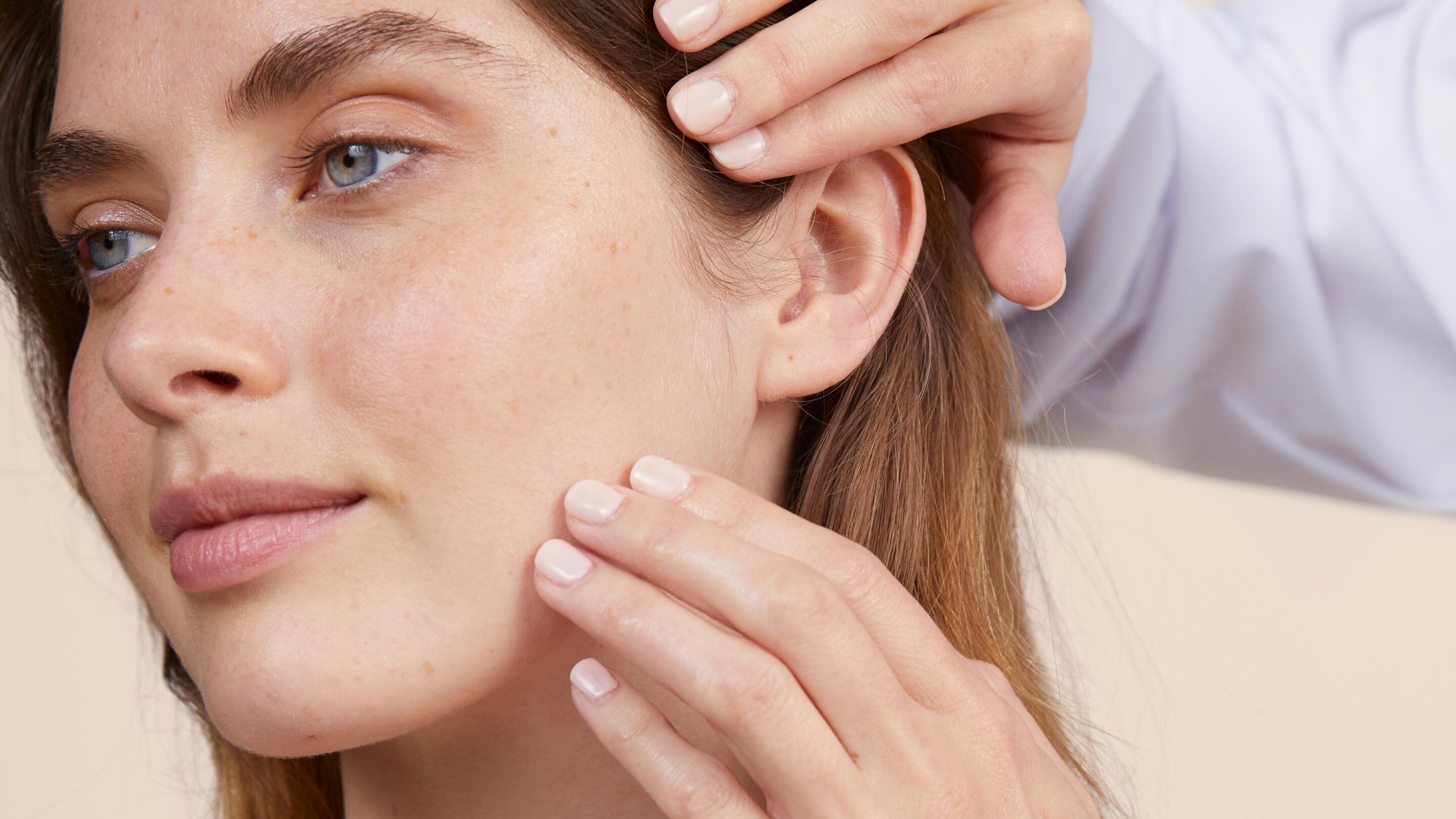Combination skin: definition
Combination skin refers to a type of skin with different qualities in different areas of the face due to unbalanced sebum production. This is the most common skin type, but how do you recognise combination skin so you can choose the right face care products?
It is characterised by irregular skin texture: an oilier T-zone and the rest of the face fluctuating between normal skin and dry skin, depending on the skin's sensitivity and the seasons.
Unlike oily skin, shine and blemishes are located on the forehead, nose and chin rather than on the whole face. In these areas, the pores are more visible and dilated and can cause breakouts of blackheads and small whiteheads. This is due to overactivity of the sebaceous glands, which produce excess sebum in the T-zone.
On the rest of the face, the skin is generally normal but more prone to dehydration and, consequently, to dryness and loss of radiance. The hydrolipidic film in the cheeks may have fewer of the lipids required to maintain moisture. External aggressors may cause the skin to feel tight and peel.
What is a good skincare routine for combination skin?
A common risk for combination skin is trying to get rid of blemishes with aggressive face care products. If these are too drying, the skin will compensate for the lack of sebum by overproducing it, which will only increase the undesirable effects.
On the other hand, creams and balms for dry skin may be too rich and comedogenic for the forehead, nose and chin. That's why it's important to use products specially designed for combination skin. It requires moisture, comfort and a mattifying effect for the T-zone.
We also recommend adopting a consistent, daily routine for combination skin to prevent any discomfort or imbalances.
How do you cleanse your combination skin?
Firstly, remove makeup and cleanse your face every night to prevent makeup residue and dust from clogging your pores. We recommend that you repeat cleansing in the morning to remove the excess sebum secreted during the night.
You have two options:
- The Cleansing Foam to gently remove make-up, purify and regulate sebum. Its creamy foam should be applied with light massaging motions using the fingertips, focussing on the T-zone. Then, rinse thoroughly with cool water to close the pores.
- The Micellar Lotion to cleanse and remove makeup from all sensitive skin types.
How do you remove blemishes on the face?
For an even more effective reduction in blemishes and pore visibility, we recommend applying Cleanance Women Corrective Serum in addition to a day cream. This serum refines the skin texture, evens the complexion and optimises the benefits of the mattifying cream that you apply straight after.
Which cream should I choose for combination skin?
Eau Thermale Avène has formulated fluid emulsions capable of addressing the common problems of dehydration and excess sebum in combination skin:




